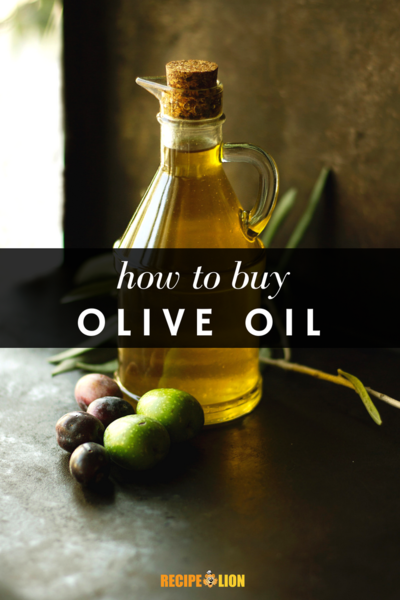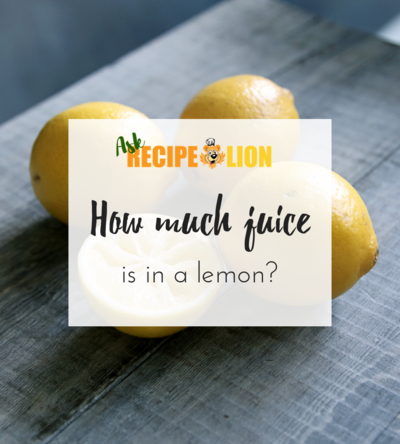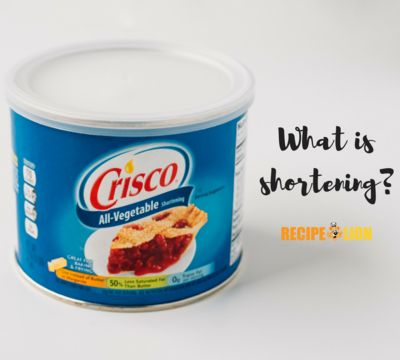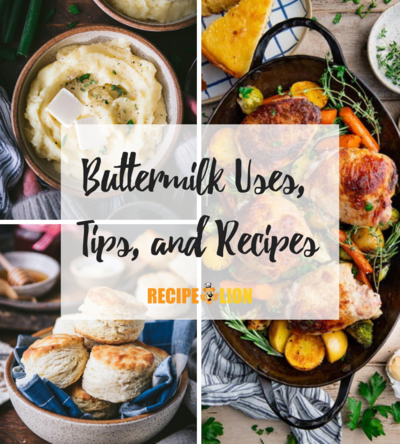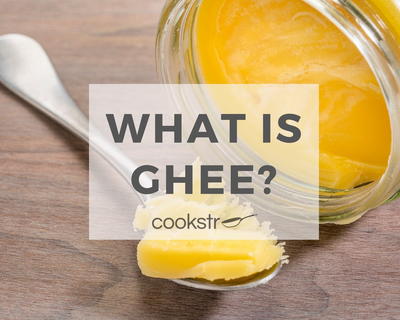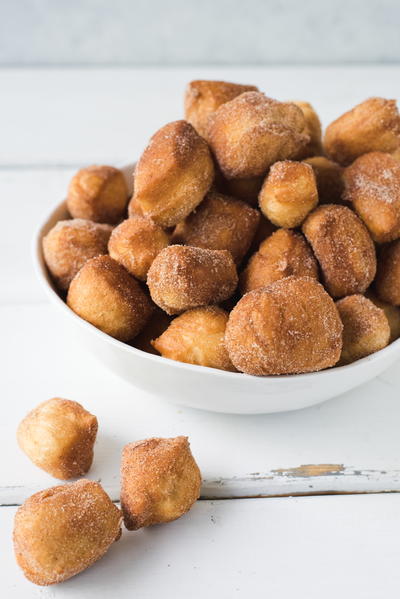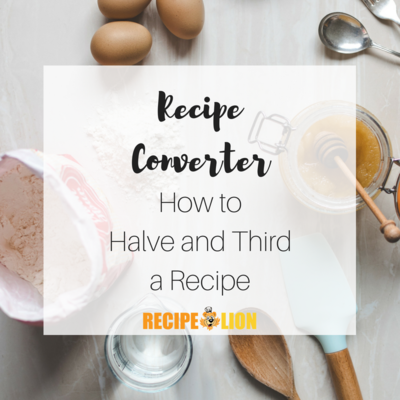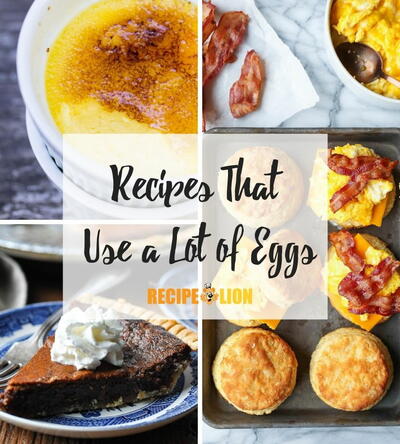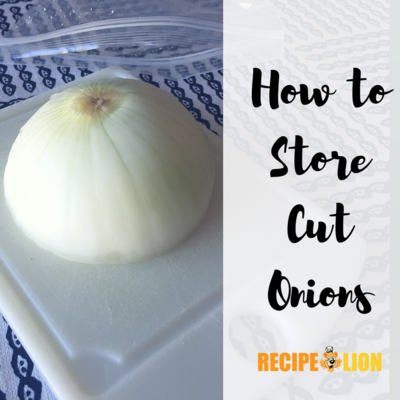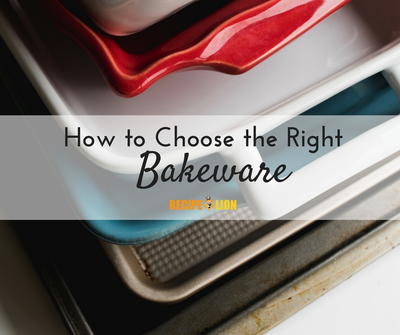How to Buy Olive Oil
Olive oil can be as intricate as wine, but now you can quickly learn how to buy olive oil.
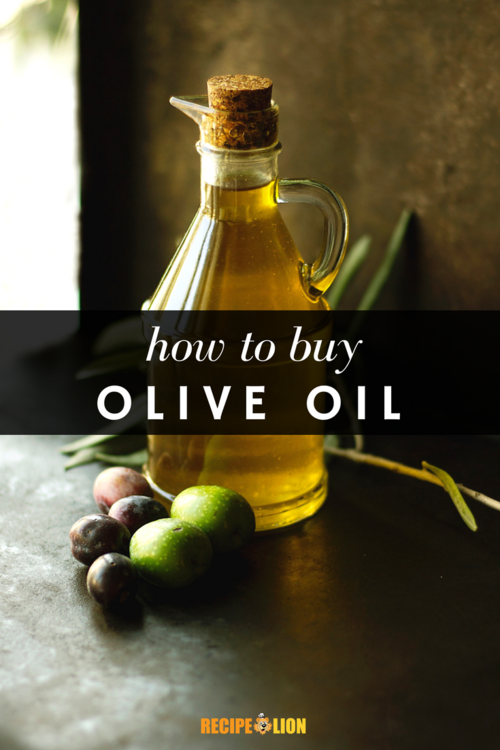
Olive oil is one of the most ancient ingredients in the culinary world. Archaeological evidence suggests that mankind has been indulging in olive oil since 6000 BC! Alongside salt and pepper, olive oil is still one of the most common pantry staples today. It's one of the most reliable methods of roasting vegetables and making salad dressing. Beyond that, since it's technically made of fruit, it has good nutrients for you!
However, going olive oil shopping is not as simple as grabbing a bottle off the shelf. It can be difficult to figure out how to buy olive oil. Knowing where to buy good quality olive oil can be a skill, let alone knowing how to select the olive oil that best suits your needs. Like wine, olive oil has flavors, notes, and colors. And do you really know exactly what "extra virgin" means?
Luckily, RecipeLion's comprehensive guide is here to help you learn how to buy olive oil. Once you've absorbed all of the tips and tricks for obtaining the best possible olive oil, you won't fall for cheap or fraudulent olive oils ever again!
How to Buy Olive Oil
1. Buy olive oil in a dark-tinted bottle.
Since olive oil is fruit juice, it can easily go bad. When improperly purchased and stored, even very expensive olive oils can decrease in quality until they're just average. Heat and light are the enemies of olive oil. Dark glass is the ideal container for olive oil, and it should be stored in a dark, cool place--that means you shouldn't have it in a cabinet next to the stove!
In the same vein of thought, avoid plastic bottles. Plastic is a porous material that will allow in too much light, heat, and air, compromising the integrity of your olive oil.
2. Purchase extra virgin olive oil.
What is extra virgin olive oil, and why is it important? There are three types of olive oil commonly on shelves: extra virgin, virgin, and pure. Virgin and pure olive oils are commonly made with low-quality, bland olive oils and are sometimes even cut with cheap vegetable oil.
• Extra virgin olive oil, on the other hand, must come from fresh olives milled within a day of harvesting.
• Extra virgin olive oil is extracted by mechanical means (i.e. pressing, squeezing) instead of heat or chemicals.
• Extra virgin olive oil is not treated chemically in any way. In fact, extra virgin olive oil is essentially just fresh olive juice.
• Oil has to undergo a twofold test before being labeled as extra-virgin. First, extra-virgin olive oils are legally required to contain less than .8% of oleic acid content--higher percentages would damage flavor and shelf life. Next, extra virgin oils undergo a "sensory test." A panel of olive-oil tasters (what a day job!) determine if the oil is defective in any way. Lesser olive oils do not have to undergo vetting like extra virgin olive oils.
Bear in mind that if your olive oil is less than $10 a liter, it's not likely to be very good even if it is extra virgin. Bearing that in mind, it's okay to use cheaper oils for cooking while reserving pricier oils for drizzling and dipping.
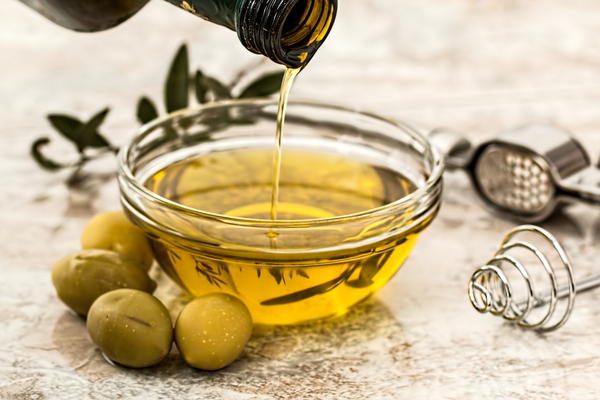
3. Purchase fresh olive oil.
Fruit juice does not improve with age. Check the timestamps on your bottles; if they were processed over two years ago, do not buy. If there is no readily available timestamp, the bottle is probably not very trustworthy.
4. Search for an estate name or seal.
It's okay, you don't have to memorize a long list of reputable olive oil producers! Even if you don't recognize the estate name on the bottle, its presence is a sign of good quality. Likewise, if you spot a PDO (the European Union’s official Protected Designation of Origin) seal or a DOP seal (the Italian equivalent), you're in the clear.
If there is more than one region, city, or country listed on the bottle, put it back on the shelf. You don't want your olive oil to be blended and diluted from many different places! When in doubt, or if you're having trouble picking between two fantastic-looking bottles, you can refer to olive oils that performed well in reputable olive oil competitions. Two excellent resources include the Napa County Fair Olive Oil Competition and the New York International Olive Oil Competition.
5. Taste your olive oil if there are samples. If not... read the type of olives used in the oil, do a quick Google search, and make an educated guess!
It's always better to shop at a store that offers free olive oil samples, since you cannot tell what an oil will taste like just by looking at it and reading the label, especially since extra virgin olive oil has so many notes and intricacies.
However, if sampling is not feasible, read the label, pull out your smartphone, and do some quick searches. Although geography and method of harvesting, pressing, blending, storage impact the taste of olive oil deeply, if you see that the oil is made with taggiasca olive juice, you can presume that the oil will be light, delicate, and sweet; if it's made with nocellara olive juice, it's a safe assumption that the flavor will be leafy, herbaceous, and robust.
Olive Oil Buying Checklist
And there you have it! At the end of the day there is no one best olive oil for cooking or one best place to buy olive oil, but once you know the trick to it, olive oil shopping can be tons of fun. Go forth and buy!
...but before you head out, we've created this handy checklist to take with you as you shop. Click here to download the printable PDF!
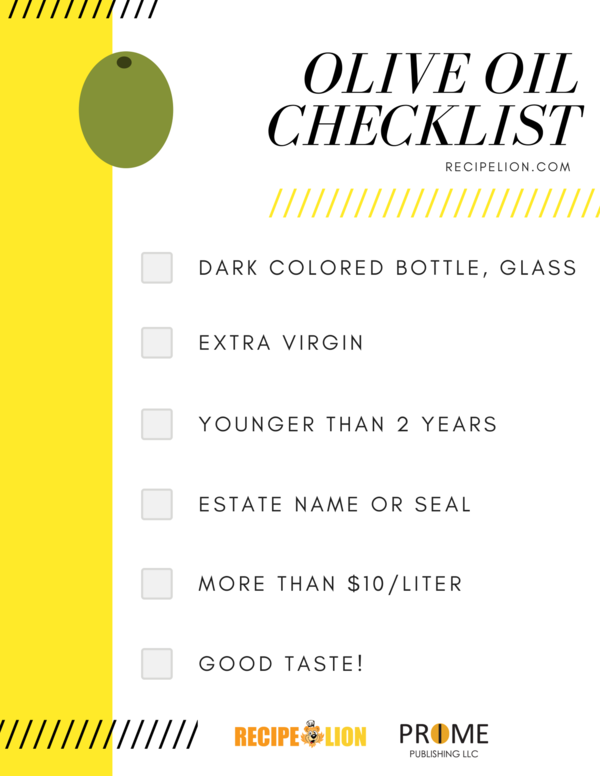
Have you ever been to a vineyard or orchard, for olives or otherwise? Let us know about your experience in the comments!

